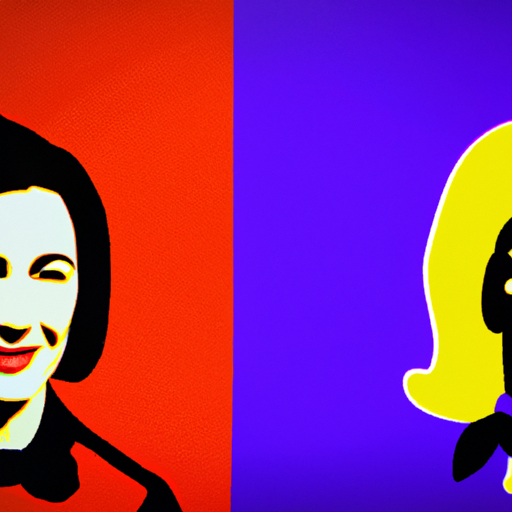
-
Table of Contents
Embracing Negative Space: Creative Design Approaches

When it comes to design, the use of negative space is often overlooked or misunderstood. Negative space, also known as white space, is the area surrounding and between the main elements of a design. It is the empty space that can be found in logos, advertisements, websites, and other visual compositions. While some may see negative space as wasted space, it is actually a powerful tool that can enhance the overall impact and effectiveness of a design. In this article, we will explore the concept of negative space and discuss how embracing it can lead to more creative and visually appealing designs.
The Power of Negative Space
Negative space is not just empty space; it is an integral part of the design itself. It plays a crucial role in defining the relationship between the elements and creating a sense of balance and harmony. By strategically using negative space, designers can guide the viewer’s attention, improve readability, and evoke certain emotions or associations.
One of the key benefits of negative space is its ability to enhance visual communication. When used effectively, it can make a design more memorable and impactful. For example, the FedEx logo is a classic example of negative space usage. The hidden arrow formed by the negative space between the “E” and the “x” not only adds an element of surprise but also symbolizes speed and efficiency, aligning perfectly with the company’s brand values.
Another advantage of negative space is its ability to improve readability. By giving elements room to breathe, designers can ensure that the message is clear and easy to understand. In typography, negative space is often used to separate letters and words, making the text more legible. The famous “I ❤ NY” logo is a great example of this. The heart symbol is surrounded by ample negative space, allowing it to stand out and be easily recognizable.
Types of Negative Space
Negative space can take various forms and can be categorized into different types. Understanding these types can help designers make more informed decisions when incorporating negative space into their designs. Here are some common types of negative space:
- Macro Negative Space: This refers to the overall empty space surrounding the main elements of a design. It helps establish the composition’s structure and balance.
- Micro Negative Space: Micro negative space refers to the smaller areas of empty space within the main elements of a design. It can be used to create intricate details and add depth to the overall composition.
- Active Negative Space: Active negative space is intentionally created to form a specific shape or image. It is often used to convey a hidden message or add an element of surprise to the design.
- Passive Negative Space: Passive negative space is the unintentional empty space that naturally occurs between elements. While it may not have been deliberately created, it still plays a role in the overall composition.
Case Studies: Successful Use of Negative Space
Many well-known brands and designers have embraced negative space to create visually stunning and memorable designs. Let’s take a look at a few case studies that highlight the successful use of negative space:
1. Apple
The Apple logo is a prime example of how negative space can be used to create a simple yet powerful design. The iconic apple silhouette with a bite taken out of it is instantly recognizable. The bite mark not only adds a touch of playfulness but also creates a sense of familiarity and human connection.
2. WWF
The World Wildlife Fund (WWF) logo cleverly incorporates negative space to depict a panda. The black and white shapes not only represent the panda itself but also form the shape of a person, symbolizing the organization’s mission to protect both wildlife and the environment.
3. FedEx
As mentioned earlier, the FedEx logo is a masterclass in negative space usage. The hidden arrow formed by the negative space between the “E” and the “x” adds a subtle element of motion and speed, reinforcing the company’s reputation for reliable and efficient delivery services.
Guidelines for Embracing Negative Space
While negative space can greatly enhance a design, it is important to use it thoughtfully and purposefully. Here are some guidelines to keep in mind when embracing negative space:
- Keep it balanced: Negative space should be distributed evenly throughout the design to maintain a sense of balance and harmony.
- Consider the context: The use of negative space should align with the overall message and purpose of the design. It should not distract or confuse the viewer.
- Experiment with scale: Varying the size and scale of negative space can create visual interest and hierarchy within the design.
- Use it to guide the viewer: Negative space can be used to direct the viewer’s attention and guide their gaze towards the most important elements of the design.
- Don’t be afraid of simplicity: Sometimes, less is more. Embracing negative space can result in clean and minimalist designs that are visually striking.
Conclusion
Negative space is a powerful tool that can elevate the impact and effectiveness of a design. By embracing negative space, designers can create visually appealing compositions that are memorable, readable, and impactful. Whether it’s the hidden arrow in the FedEx logo or the simplicity of the Apple logo, the successful use of negative space can leave a lasting impression on the viewer. So, the next time you embark on a design project, remember to embrace the power of negative space and let it guide your creative approach.
